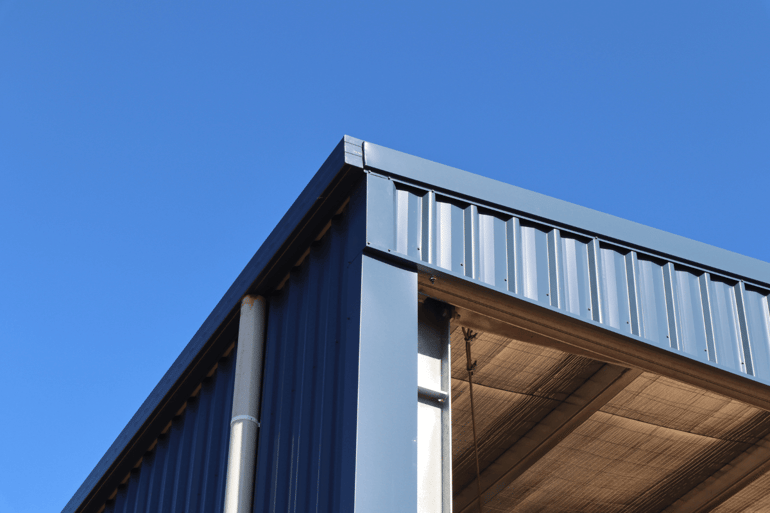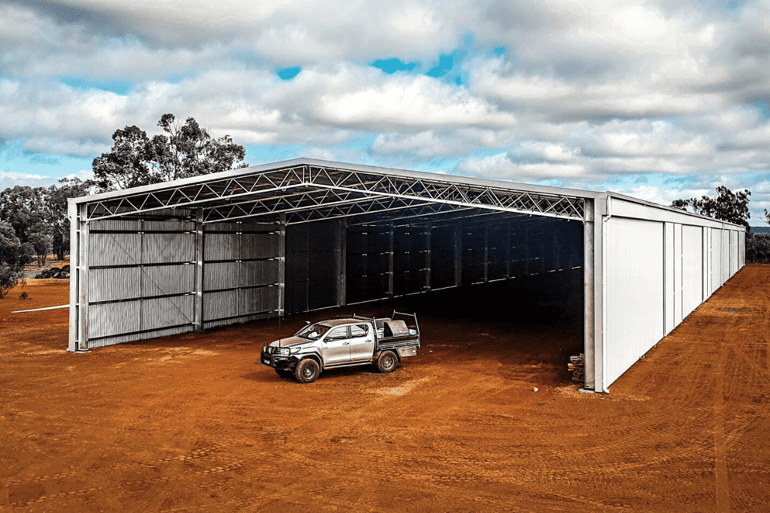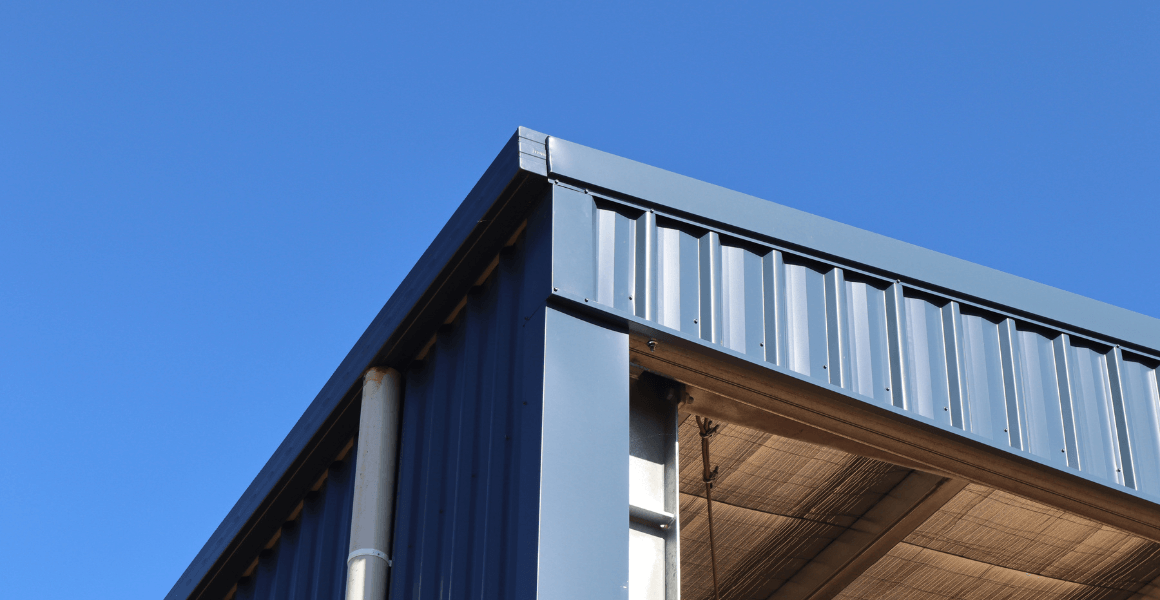What’s the difference between BMT and TCT cladding?

When building a steel shed, you need to have full confidence in its strength, durability, and engineering. That’s why there is such a range of metrics and terminology in the industry to measure material strength and quality.
Two common terms used to describe steel cladding are Base Metal Thickness (BMT) and Total Coated Thickness (TCT). While they sometimes get confused, these are two separate measurements and must be used with care.
When measuring the steel for your new shed, the smallest error could be problematic and expensive later on. To help you understand these metrics and when to use them, this article explains everything you need to know.
How to measure bare metal thickness
When it comes to measuring steel cladding, you need to understand the metrics used in the industry. Generally, bare metal is measured in microns. Its thickness can vary greatly depending on the alloy it is made of and the manufacturer. The average thicknesses of the common alloys are:
- Aluminium – 4.5 to 6.0 microns.
- Stainless steel – 40 to 50 microns.
- Structural steel – 48 to 52 microns (galvanised or not).
Some metals, like chromium and nickel, also require more layers of primer, paint, and corrosion-resistant coating. These layers add to the overall thickness of the cladding.
To measure individual layers, use a paint depth gauge. Simply apply the “inside” tester on your coating and push it until it hits the bare metal. If you prefer to measure the metal and the paint, use a micrometre. Simply collect a sample of the metal and paint layers and measure each individually. Once you have checked each layer, add them together for the Total Coated Thickness (TCT).
Base Metal Thickness (BMT)
Base Metal Thickness (BMT) is used to measure the core strength of steel cladding before it has any coating or paint layers added to it. For design calculations or structural design, BMT is an accurate indication of material strength.
Total Coated Thickness (TCT)
Total Coated Thickness (TCT) measures both the base metal and any metallic coating layers. This includes a hot-dip galvanised surface which is applied for corrosion resistance.
To calculate the TCT, simply add together the thickness of the base metal and each additional layer of alloy coating, paint, and primer. Unlike BMT, TCT does not specify the core steel's strength. You may also notice the term After Paint Thickness (APT) used in place of TCT but this is less common.
What's better, BMT or TCT?
As you now know, there is a slight difference between BMT and TCT, even though their measurements are very similar.
The difference in thickness will be very small – while BMT measures the core strength of the steel, TCT takes into account every layer of protection including layers like primer and paint. In short, neither is more important than the other as they each fulfil a different function.
What this means for your shed quote
When it comes to building a new steel shed, you will likely request a number of quotes from various shed suppliers and manufacturers, to see who can offer you the best price. When checking a quote it's important that you understand what cladding is being quoted, and whether your shed will be produced using BMT or TCT cladding.
When comparing the sheeting on your quote check that you are comparing the same thickness of sheeting. So when comparing quotes, check that you are comparing BMT with BMT and/or TCT with TCT, otherwise you could be misled as to the quality of the product you are purchasing. For example, some companies will use a thinner grade TCT than others, which in the long run, could increase the chance of damage and unnecessary wear and tear. Just because a company specifies a certain TCT measurement, it doesn't mean that this is an accurate representation of the strength of the product.
Because of the differences in BMT and TCT measurements, quotes simply cannot be compared like for like, where different measurements are used. That's why we always recommend thoroughly checking every shed quote you receive, to ensure you know exactly what you're paying for.
ABC Sheds BMT cladding

Now that you understand what measurements structural steel sheds are quoted in, we wanted to further clarify the measurements that we use, for all ABC sheds.
At ABC Sheds, all of our sheds are quoted in Base Metal Thickness to ensure consistency and accuracy across every project we work on. We primarily use Zincalume® and Colorbond® cladding as a base, to ensure the strength and durability of your new shed. Both Zincalume® and Colorbond® cladding are quoted as a BMT thickness of .42mm (unless specified otherwise). Some of the other common cladding choices and their measurements are listed below.
| Product | Cladding | BMT Measurement |
| Trimwall | Zincalume® | .35mm |
| Trimwall | Colorbond® | .35mm |
| Trimclad/ Corrogate | Zincalume® | .42mm |
| Trimclad/ Corrogate | Colorbond® | .48mm |
The process of building a new shed can be daunting but with the support of a professional team, it can be hassle-free. Get in touch with us today for more advice or see our complete range of sheds, including farm sheds, hay sheds, dressage arenas, commercial sheds and more, in the free brochure.
-1.png?width=3641&height=660&name=abcshedstransparent2%20(1)-1.png)





